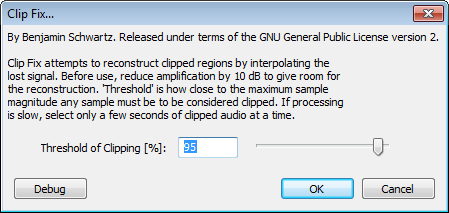

Step 2: Select An Instance of the Background Noise Make sure that after you zoom in, you return to the start of the track. You can click the “+” icon in the upper right hand corner to zoom in on the sound.

I always like to zoom in on the audio file, because it’s easier to see the nuisances in the sound. Once the file imports, it will look like the screen below. I selected a recent podcast interview that I did with a someone who successfully raised over $16,000 on Kickstarter. Step 1: Open Audacity and Import the Song File.įirst, you need to open audacity, create a new project, and import the song file, as I’ve shown below. I hope the steps below are helpful and easy to follow! Let me know via comment if you were able to remove the audio noise from your podcast or recording. It took me a little while to figure out how to eliminate that background noise, but I eventually figured out how to do it in Audacity! For those who don’t know, Audacity is one of the top free audio editing/recording tools out there. If low-frequency sounds are causing the problem, reduce the bass frequencies.In an effort to up my podcasting game, I recently bought the Blue Yeti Microphone. I got to admit, there is a real difference in the sound quality, however, it’s so sensitive! I noticed this perpetual hum on every recording, that I think is coming from my laptop or the power cord.

If the high frequencies are causing clipping, reduce them in the EQ. Open the "EQ" settings to view the low bass, high treble and medium mid-tone frequencies. For instance, if the mix contains excessive bass, these intense low frequencies may result in clipping. Clipping often occurs when a specific frequency range dominates the mix. If your software includes a multiband compressor, reduce both the amount of gain and the threshold.Įqualize the audio file. If your software uses a simple linear compressor, apply as much compression as needed to reduce the clipping. Compression is usually among the effects options, which may be on the menu bar, on a virtual mixer or in a separate effects window. Since clipping most often occurs during high peaks, you can reduce the presence of clipping by applying compression. Compression helps to stabilize the high and low volume peaks in a recording, improving its consistency.


 0 kommentar(er)
0 kommentar(er)
